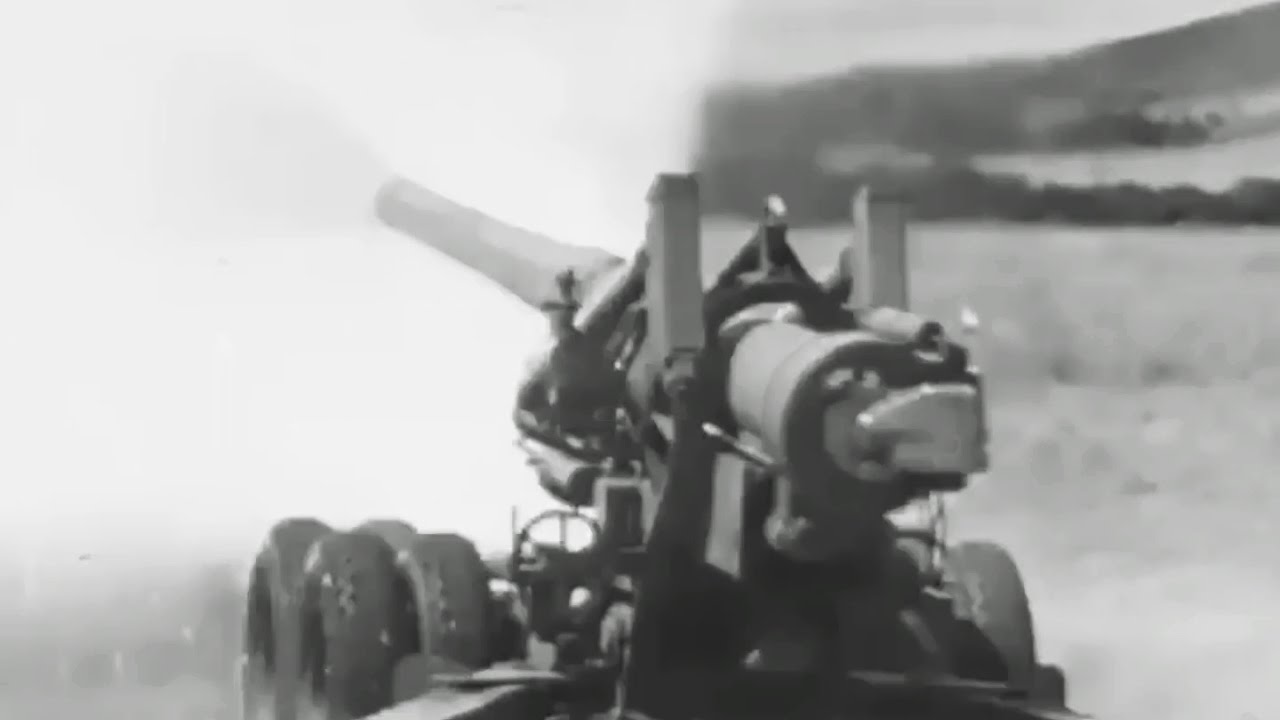US Army Training Film playlist:
more at
Shows many of the weapons used by the US Army in WWII and the destruction they could cause.
US Army War Film WF-19
Public domain film from the US Army, slightly cropped to remove uneven edges, with the aspect ratio corrected, and one-pass brightness-contrast-color correction & mild video noise reduction applied.
The soundtrack was also processed with volume normalization, noise reduction, clipping reduction, and/or equalization (the resulting sound, though not perfect, is far less noisy than the original).
The M1 carbine (formally the United States Carbine, Caliber .30, M1) is a lightweight .30 caliber semi-automatic carbine that became a standard firearm for the U.S. military during World War II, the Korean War and the Vietnam War, and was produced in several variants. Easy to use, it was widely used by U.S. and foreign military, paramilitary and police forces, and has also been a popular civilian firearm.
In selective-fire versions capable of fully automatic firing, the carbine is designated the M2 carbine. The M3 carbine was an M1 or M2 with an active infrared scope system. Unlike conventional carbines, which are generally shorter-barreled versions of a longer parent rifle (like the earlier .30-40 U.S. Krag rifle and carbine and the later M16 rifle and M4 carbine), the M1 carbine has only one minor part in common with the unrelated larger M1 Garand, a short buttplate screw, and fires a different cartridge…
The 240 mm Howitzer M1, popularly nicknamed the “Black Dragon”, was a towed howitzer used by the United States Army. The 240 mm M1 was designed to replace the World War I era 240 mm Howitzer M1918 which was based on a 1911 French design and was outdated by World War II. The project to replace the M1918 began in 1941. The 240 mm howitzer was the most powerful weapon deployed by US field artillery units during World War II, able to fire a 360 lb (160 kg) high explosive projectile 25,225 yards (23 km). It was the largest field piece used by the US Army during the war except for naval ordnance adapted into railway guns. The weapon addressed the requirement for super heavy field artillery capable of attacking heavily reinforced targets like those likely to be found along the Siegfried Line…
The M2 4.2 inch Mortar was a U.S. rifled 4.2-inch (107 mm) mortar used during the Second World War and the Korean War. It entered service in 1943. It was nicknamed the “Goon Gun” (from its large bullet-shaped shells, monopod, and rifled bore – like a rifle for shooting Goons) or the “Four-Deuce” (from its bore size in inches). In 1951 it began to be phased out in favor of the M30 mortar of the same caliber…
The Ordnance Quick-Firing 6-pounder 7 cwt, or just 6 pounder, was a British 57 mm gun, serving as a primary anti-tank gun of the British Army during World War II, as well as the main armament for a number of armoured fighting vehicles. It was first used in North Africa in April 1942, and quickly replaced the 2 pounder in the anti-tank role, allowing the 25 pounder to revert to its intended artillery role. The United States Army also adopted the 6 pounder as their primary anti-tank gun under the designation 57 mm Gun M1…

